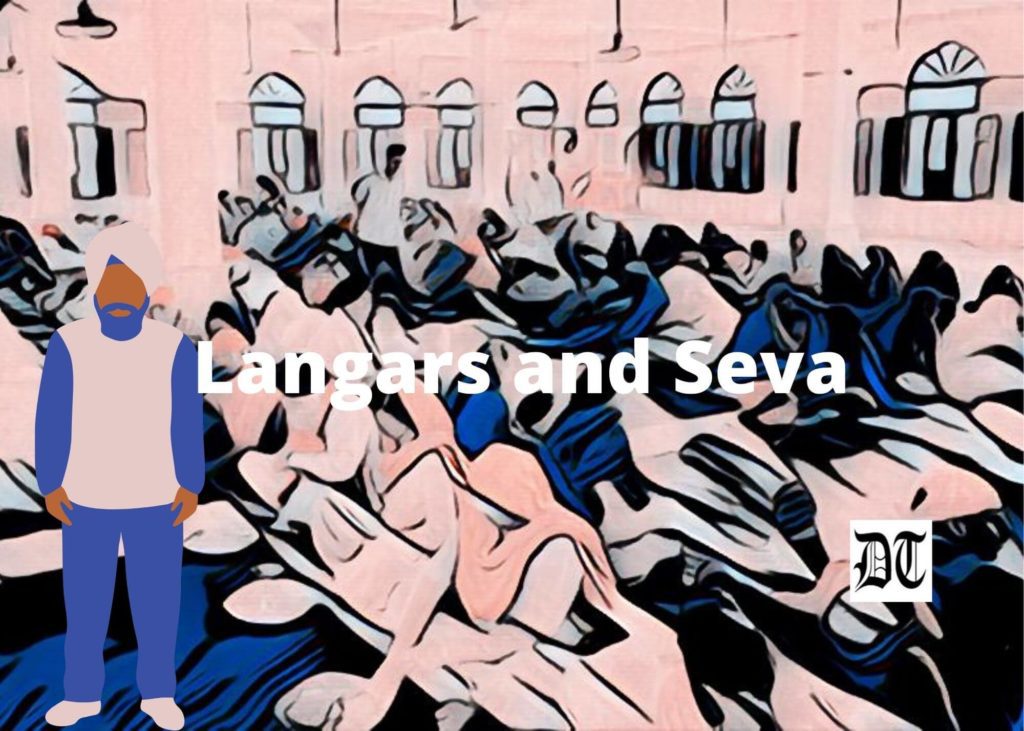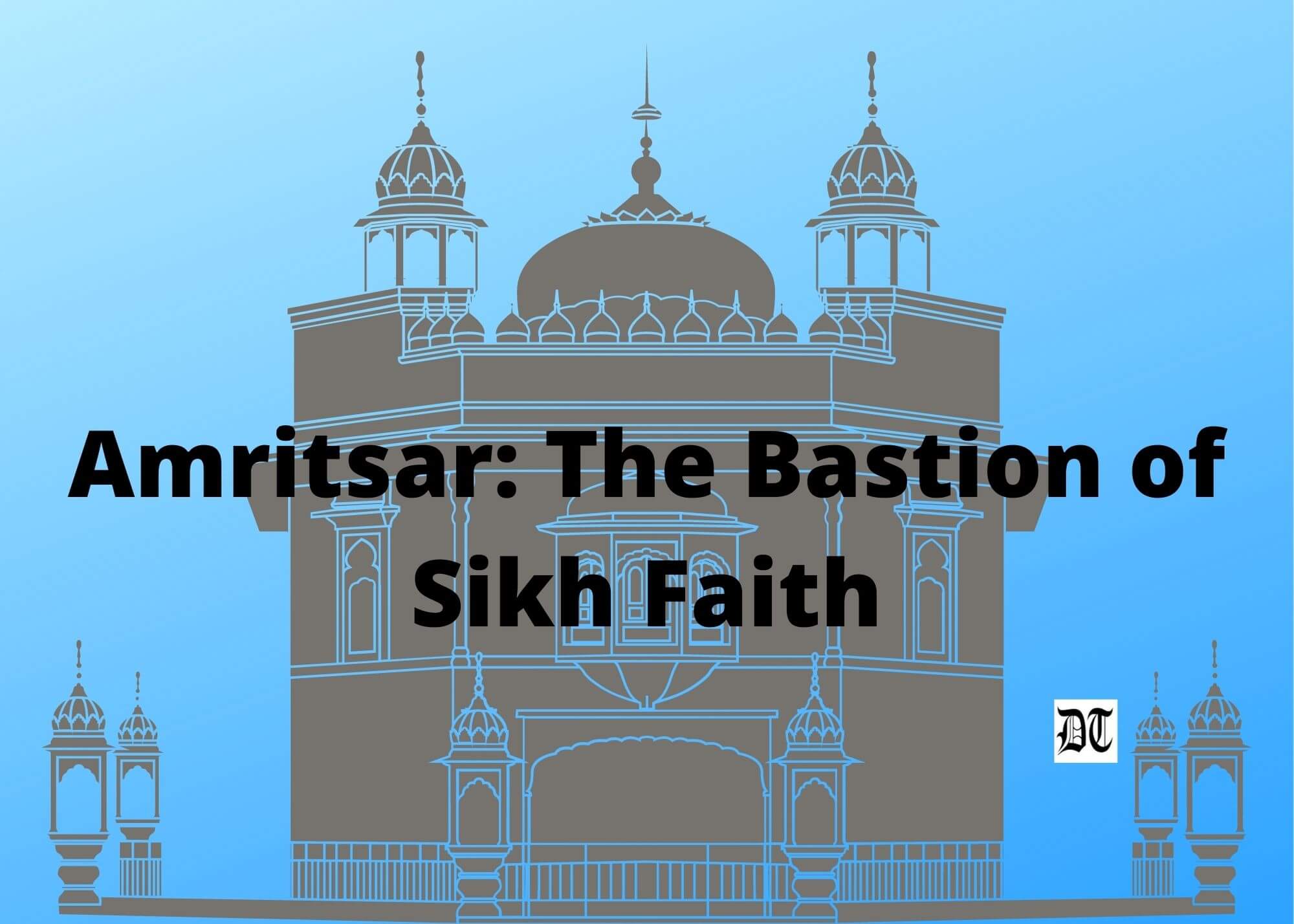Reading Time: 4 minutes
Ruchira takes us on a tour of Amritsar, a 16th-century town, founded by the fourth Sikh Guru Ramdas Ji. An exclusive for Different Truths.

When we used to live in Ludhiana, Amritsar was an oft-visited city. For the simple reason that, as part of their of Punjab trip, numerous relatives and members of our extended family would descend upon our home. And Amritsar was always on top of their itinerary. Naturally, therefore, any number of times I would have to accompany them and show them around the city.
Amritsar is barely three hours by road from Ludhiana. The city as we all know is a medieval one founded way back in 1574, by the 4th Sikh Guru Ramdas ji. The pivot point of the nascent city was a massive manmade pool on which was built the sanctum sanctorum known by the name of Shri Harmandir Sahib. The pool eventually came to be known as Amritsar (lit: a pool of nectar of spirituality). The shrine built-in 1604 houses the Akal Takht (lit: supreme/eternal throne) and is the premier among the five Akal Takhts located across India.
To elaborate further, Guru Granth Sahib the sacred volume of Sikhism is safely and most respectfully ensconced on each of the takhts. Hence these places have emerged as major places of pilgrimage for the devout Sikhs. The shrine is also hailed as the Golden temple not only across the land but also beyond its borders.
Interestingly, Tagore mentions in his autobiographical oeuvre Jiban Smriti (Reminiscences) how at age 13 he had accompanied his father Maharshi Debendrath Tagore on a trip to Dalhousie and Amritsar…

Interestingly, Tagore mentions in his autobiographical oeuvre Jiban Smriti (Reminiscences) how at age 13 he had accompanied his father Maharshi Debendrath Tagore on a trip to Dalhousie and Amritsar (both were in erstwhile Punjab province in British India). The young lad was mesmerised by the serene beauty of the marble edifice with its majestic, resplendent dome swathed in beaten leaves of pure gold. Further, he found the shabad keertan style of vocal music used in the devotional songs – sung within the shrine – soul-stirring. In fact, he even penned some lyrics and set them to this style. They remain popular till date.
After a gap of decades, I visited Amritsar five years ago. As expected the place had grown highly congested but touches of modernity and affluence were palpable all around. We spent half a day within the temple premises, had a darshan followed by community lunch aka langar. But I was amazed to see the milling crowds; during my earlier visits, the crowds were much thinner, less dense. Now, people were literally jostling with one other for space. Another point that peeved us no end was the manner of service. While the people squatted on the floor the sevaks who were serving appeared downright brash and careless; the rotis were falling off the thalis, the daal splashing onto your dress, the curry barely a ladleful. Their manner reminded you of how people throw food to the dogs! I have partaken of langars at innumerable gurdwaras over the years. But this case was certainly unprecedented!
Our next halt was at the Jallianwala Bagh situated at a stone’s throw from the temple. The sprawling garden is notorious in colonial history as the site of a gruesome cold-blooded genocide.
Our next halt was at the Jallianwala Bagh situated at a stone’s throw from the temple. The sprawling garden is notorious in colonial history as the site of a gruesome cold-blooded genocide. A shiver ran down my spine while I mentally visualised how on that sunny April day, more than a century ago, hundreds of people ran helter-skelter in a paroxysm of fear, at this very spot, in a bid to save their lives. Yet many others leaped to their deaths in the well that stands in the premise.
In the vicinity stands the Durgiana temple, its architecture an exact replica of the golden temple! The edifice is believed to have certain Mahabharata connotations but you could safely give it a miss. Since we had very little time on our hands, we could not make it to the Atari border a little distance out of town. It is a must-see for all visitors. The closing ceremony at sundown each day is particularly impressive, I am told.
Do not forget to buy the popular masala badis (dried spicy lentil chunks) that Amritsar is famous for.
While in the town make it a point to sample the local lassi, which is indeed mind-blowing. As we had gone there in mid-July each sip of the icy liquid was like manna from heaven. My daughter who managed to polish off two huge tumblers was thrilled. Do not forget to buy the popular masala badis (dried spicy lentil chunks) that Amritsar is famous for. Also, check out the locally manufactured woollen blankets mostly in pocket-friendly ranges to keep you snug and cozy through the winter months!
Visuals by Different Truths















